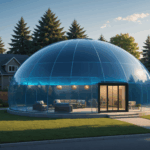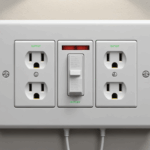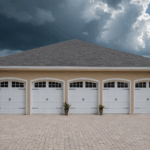When embarking on a deck installation project, understanding the myriad factors that influence the overall cost is crucial for effective budgeting and planning. By conducting a thorough cost analysis, homeowners can make informed decisions and potentially save on expenses. Here are some key factors that significantly impact the cost of building a new deck:
1. Deck Size: The dimensions of your deck will naturally affect the cost. A larger deck not only requires more materials but also increases labor costs as more time is needed to complete the construction. Consider how you intend to use the space — whether for intimate gatherings or expansive outdoor living — to determine the most suitable size for your needs.
2. Material Selection: The type of material chosen can drastically vary in price. From natural woods like cedar and redwood to composite and PVC options, each material presents a different price point and offers distinct advantages in terms of durability and maintenance. It’s vital to weigh the long-term benefits against initial costs in this analysis.
3. Design Complexity: A simple rectangular deck will generally cost less than one featuring intricate designs, multiple levels, or custom features. Additional aspects like built-in seating, planters, or intricate railings can also drive up costs. As such, clarify your design preferences early in the planning process.
4. Site Conditions: The topography and condition of your backyard will affect installation expenses. Sloped or uneven terrain may require additional grading or the incorporation of support structures like retaining walls or customized footings. Similarly, if trees, rocks, or other obstacles need to be cleared, expect these additional preparation tasks to be reflected in the final cost.
5. Permits and Regulations: Depending on where you live, local building codes and permit requirements can alter your project’s budget. Keeping abreast of local regulations and obtaining the necessary permits not only ensures compliance but can also prevent costly fines and delays.
6. Accessibility: If your property’s location or terrain makes access difficult for construction equipment and workers, expect to incur higher costs. This can occur in densely wooded areas or locations without nearby road access, necessitating alternative approaches that may take more time and resources.
| Factor | Cost Impact |
| Deck Size | Higher material and labor costs for larger decks |
| Material Selection | Varies greatly; composite materials usually higher |
| Design Complexity | Increased costs with custom or intricate designs |
| Site Conditions | Extra grading or retaining walls increases budget |
| Permits and Regulations | Permit costs and potential inspection fees |
| Accessibility | Challenging access can increase labor expenses |
By keeping these factors in mind, homeowners can better foresee the elements that may raise their deck installation costs and take proactive measures to mitigate potential issues, ensuring their outdoor living space is not only beautiful but also financially feasible.
types of materials
When considering the types of materials for your deck installation, it’s essential to conduct a comprehensive cost analysis to determine which options align best with your budget and lifestyle needs. Each material type offers distinct advantages and potential drawbacks that can significantly impact the overall cost and longevity of your outdoor living space. Below is a detailed exploration of the most common materials used in building decks, allowing you to make informed decisions tailored to your specific requirements.
1. Pressure-Treated Lumber
– This is the most commonly used decking material, praised for its affordability and durability.
– Pros:
– Cost-effective compared to other materials.
– Resistant to insects and rot due to chemical treatment.
– Available widely in various sizes.
– Cons:
– Requires regular maintenance, such as annual sealing or staining.
– Susceptible to warping, cracking, and splintering over time.
– Best for those looking to keep initial costs low while being willing to invest in ongoing maintenance.
2. Hardwood (e.g., Cedar, Redwood, Ipe)
– Chosen for their natural beauty and rich color.
– Pros:
– Naturally resistant to decay and insects.
– Can be left untreated for a silver patina or sealed to maintain color.
– Cons:
– Higher upfront cost than pressure-treated lumber.
– Requires periodic maintenance to preserve appearance and durability.
– Ideal for homeowners prioritizing aesthetics and willing to maintain a natural wood look.
3. Composite Decking
– Composed of a mixture of wood fibers and recycled plastic.
– Pros:
– Low maintenance, requiring only occasional cleaning.
– Resistant to fading, staining, and scratching.
– Available in a range of colors and finishes to mimic wood.
– Cons:
– More expensive than natural wood options.
– Can feel hotter than wood underfoot in direct sunlight.
– Suitable for those seeking a low-maintenance option without frequent upkeep.
4. PVC Decking
– Made entirely from plastic, offering high durability.
– Pros:
– Resistant to moisture, mold, and insect damage.
– Lightweight and easy to handle during installation.
– Little to no maintenance required beyond occasional washing.
– Cons:
– High material cost akin to composite decking.
– Limited options for achieving a natural wood appearance.
– Great for environments with high humidity or exposure to water.
5. Aluminum Decking
– An option gaining popularity for its strength and long lifespan.
– Pros:
– Extremely durable and resistant to the elements.
– Lightweight, easy to install, and scratch-resistant.
– Virtually maintenance-free.
– Cons:
– Expensive, often the priciest material choice.
– Limited color options and more industrial appearance.
– Best for those prioritizing longevity and minimal upkeep in environments with harsh weather conditions.
By considering the unique attributes and cost implications of each material type, you can better plan your deck installation process to fit your budget and aesthetic goals, ensuring a long-lasting and visually pleasing outdoor living area. As materials significantly influence both the initial expenditure and the lifetime upkeep of your deck, choosing wisely can save you both time and money in the long run.
labor and installation expenses
Labor and installation expenses often constitute a significant portion of the cost analysis when planning your deck installation. Understanding these costs is essential for preparing a sound budget and ensuring that the project proceeds smoothly. Here are some of the main factors to consider in this aspect:
Skilled Labor Rates: The rates for hiring skilled carpenters or contractors can vary greatly depending on your geographic location. In areas with a high cost of living or high demand for construction work, labor costs may be significantly higher. This is why it’s critical for homeowners to obtain multiple quotes from experienced professionals to ensure a competitive price is being offered for their deck installation.
Complexity of Design: The intricacy of your outdoor living space can have a direct impact on labor expenses. A basic rectangular deck will typically require less labor time than a more elaborate design featuring curves, multiple levels, or custom builds such as integrated seating or planters. These complex designs require additional time and specialized skills to execute, thus increasing labor charges.
Contractor Experience: Hiring a well-regarded contractor with extensive experience can seem costly up front but often translates into fewer issues and a higher quality result. Experienced crews may work more efficiently and be better prepared for unexpected challenges, potentially saving time and money on the project.
Installation Techniques: Different deck materials might require specific installation techniques that can vary in complexity. For instance, installing composite or PVC decking might involve different fastening systems compared to traditional wood, affecting the overall labor time required. Understanding these differences is crucial when calculating labor costs for your chosen deck type.
Permits and Inspections: After obtaining necessary permits, contractors often incorporate these costs into their overall price. Additionally, should local regulations require any inspections, the coordination and compliance managed by your contractor can also factor into labor expenses.
Seasonal Demand: Peak construction seasons may see an increase in labor costs due to higher demand. Planning your project during off-peak times might not only lower costs but also make scheduling more flexible.
By evaluating these aspects, homeowners can gain a clearer understanding of how labor and installation expenses will impact their total deck cost. Properly accounting for these variables in your budgeting process will help prevent unexpected financial strain during construction and ensure that your outdoor living space is both affordable and beautifully crafted.
cost-saving tips
When it comes to deck installation, achieving the outdoor living space of your dreams doesn’t have to break the bank. With a strategic approach and a bit of foresight, you can significantly reduce costs without compromising on quality or aesthetics. Here are a few tips to help you keep your deck project within budget.
Firstly, consider the timing of your project. Construction demand tends to fluctuate seasonally, with spring and summer often being peak times. If possible, plan your deck installation during the off-season when contractors might offer lower rates to fill their schedules. Not only can this help reduce costs, but you may also benefit from quicker project timelines with contractors being more readily available.
Next, explore the possibility of a DIY build or, at the very least, a hybrid approach. If you’re handy with tools and have some basic construction knowledge, tackling parts of the project yourself can save you a considerable amount on labor. For those less experienced, handling less complex tasks, such as clearing the site or staining and sealing after installation, can still lead to significant savings. Ensure you understand your own limitations, though, as mistakes can be costly to fix.
Material costs can be another substantial component of your cost analysis. While high-end materials like composite or hardwood have their allure, opting for more budget-friendly alternatives such as pressure-treated lumber can considerably cut down on expenses without sacrificing structural integrity. Furthermore, bulk purchasing and seeking out sales or contractor discounts on materials can also yield savings.
Additionally, the deck’s design can play a pivotal role in total costs. While it might be tempting to opt for a complex design featuring multiple levels and intricate patterns, these choices can significantly increase both material and labor costs. A simpler layout not only minimizes expenses but can also streamline installation, providing a classic look that integrates seamlessly with various outdoor living spaces.
Don’t overlook the potential savings found in using recycled or repurposed materials. Eco-friendly, reclaimed options can reduce material costs while maintaining a unique aesthetic appeal. Often, recycled materials are available through local stores or online marketplaces, offering both cost savings and a sustainable building approach.
Lastly, investing time in obtaining several quotes from different contractors will give you a clearer perspective on fair pricing, highlighting the most competitive offers. It also allows you to vet each contractor’s reputation and previous work quality, ensuring that you’re receiving the best value for your money.
Remember, creating a stunning and functional deck doesn’t necessitate an exorbitant budget. By incorporating these cost-effective strategies while planning and executing your deck installation, you can enjoy a beautiful outdoor living area that meets both your aesthetic desires and financial constraints.
additional features and upgrades
Enhancing your deck with additional features and upgrades can elevate not only its aesthetic value but also its functionality, turning a simple outdoor platform into a luxurious extension of your home. However, these enhancements often come with added costs that should be carefully considered during your cost analysis.
One popular upgrade is built-in seating. While freestanding outdoor furniture is often sufficient, integrating seating directly into the deck provides a seamless look and optimizes space, especially in smaller areas. These built-ins can be customized with storage spaces beneath the seats for outdoor essentials, though they entail additional materials and labor, impacting the overall price.
Another sought-after enhancement is the addition of pergolas or overhead structures. These features offer shade and protection from the elements, extending the usability of your outdoor living space. Depending on the materials used and the complexity of the design, pergolas can vary greatly in cost. Opting for simpler designs or materials like pressure-treated wood can keep expenses down compared to more intricate constructions made from hardwood or metal.
Lighting is another crucial upgrade to consider for safety and ambiance. Whether you choose deck post lights, recessed fixtures, or string lights, proper illumination can transform your deck into an inviting area for evening gatherings. While solar-powered lighting options provide a cost-efficient alternative to electric fixtures, incorporating them into your budget requires foresight.
Incorporating an outdoor kitchen or grill area can significantly transform your deck but is one of the pricier upgrades. From a simple built-in grill station to elaborate environments equipped with sinks, refrigeration, and bar seating, the scale and quality of the setup will dictate costs. Precision in planning and skilled labor are paramount to ensure safe installation of utilities and appliances, adding more to labor expenses.
For those looking to make a minimal environmental impact or seeking unique aesthetics, using eco-friendly materials or sustainably sourced products for these features is an excellent option. Recycled or reclaimed materials can offer distinctive looks and contribute to a sustainable build, although they might occasionally come with a premium due to their bespoke nature.
Lastly, incorporating features like planters, water features, or even outdoor heaters can elevate the comfort and elegance of your outdoor space. These additional elements should be factored into your deck installation budget upfront, as they may require extra structural support or specialized installation, further affecting labor and material costs.
In conclusion, while building a dream deck involves understanding multiple financial aspects like material choices, labor expenses, and feature upgrades, careful planning and strategic decision-making can make such projects achievable. A well-informed cost analysis looking at all potential expenses allows you to create a stunning, functional outdoor living space tailored to your needs, keeping you both satisfied and within your budget.










